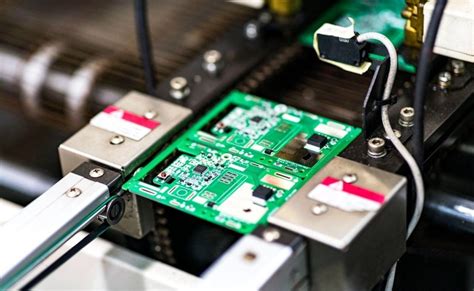Streamlining Your Needs with Printed Circuit Assembly Services
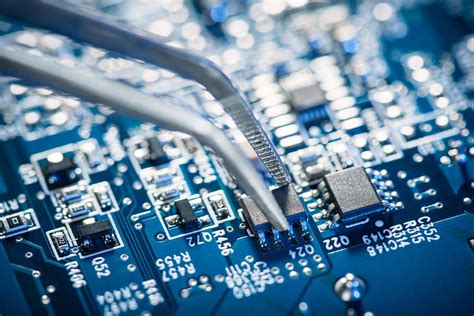
Key Takeaways
Printed circuit assembly (PCA) services play a critical role in the modern electronics landscape, providing a means to efficiently produce complex electronic systems. By leveraging advanced technologies and expertise in pcb assembly, organizations can significantly enhance their production processes. It is essential to recognize that pcba encompasses more than just soldering components onto a circuit board; it includes precise design, assembly, testing, and quality control. Engaging professional PCA services not only ensures adherence to industry standards but also minimizes the risks associated with production errors. Moreover, as companies seek to optimize their projects, adopting best practices in pcb assembly can lead to substantial cost savings and improved operational efficiency. Staying informed about future industry trends is equally important for maintaining competitive advantage and embracing innovations that can drive project success.
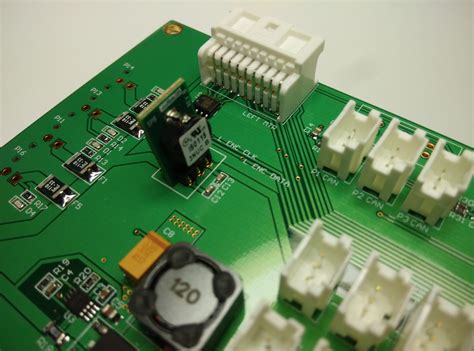
Understanding Printed Circuit Assembly Services: An Overview
Printed Circuit Assembly (PCA) services, often referred to as PCB assembly, are integral to modern electronic manufacturing. These services focus on assembling electronic components onto a printed circuit board (PCB) to create a functional unit, known as a printed circuit board assembly (PCBA). The process incorporates several stages, including design verification, component placement, soldering, and inspection. Understanding these elements is crucial to ensuring the reliability and effectiveness of electronic devices.
In the realm of PCB assembly, businesses often seek solutions that not only cater to their specific needs but also enhance overall efficiency. The right PCBA services can significantly reduce production time while improving quality control measures. This is achieved through state-of-the-art technology and methodologies employed by specialized manufacturers who focus on streamlined processes tailored to fit diverse project requirements.
To illustrate the scope of these services, consider the following comparison table that outlines key features:
| Feature | In-House PCB Assembly | Outsourced PCBA Services |
|---|---|---|
| Cost | High | Competitive |
| Time for Production | Longer | Shorter |
| Quality Control | Variable | Stringent |
| Expertise | Limited | Extensive |
“Leveraging professional PCB assembly services is a strategic move toward enhancing operational efficiency.”
In addition to the technical expertise provided by PCBA service providers, companies can also benefit from their insights on best practices. By collaborating with experienced partners in this field, organizations can address complex challenges more effectively while optimizing their electronic manufacturing processes.
Understanding printed circuit assembly services not only aids in decision-making but also empowers businesses to excel in delivering high-quality outputs that align with market demands and technological advancements.

The Benefits of Using Printed Circuit Assembly Services
Utilizing printed circuit assembly (PCA) services offers a multitude of advantages that can significantly enhance the efficiency of electronic manufacturing projects. First and foremost, pcba services streamline the assembly process, allowing companies to focus on their core competencies while leaving the intricate task of circuit assembly to specialized providers. This division of labor not only saves time but also minimizes errors that can arise from in-house assembly efforts. Furthermore, employing professional pcb assembly services can lead to substantial cost reductions. By leveraging the advanced equipment and expertise of service providers, companies can achieve high-quality results without the hefty investment in machinery and trained personnel.
The scalability offered by these services is another noteworthy benefit; as project demands fluctuate, professional assembly partners can easily adjust their output to meet production needs. Additionally, using pcba services often ensures access to cutting-edge technology and materials, which translates into products that are more reliable and durable. These advantages culminate in a faster time-to-market for new products, enhancing competitive edges in today’s rapidly evolving tech landscape. Ultimately, engaging with printed circuit assembly services provides a comprehensive solution that not only improves operational efficiency but also aligns with strategic business objectives by minimizing risks associated with electronic manufacturing processes.
Key Processes Involved in Printed Circuit Assembly
The pcb assembly process comprises several critical stages designed to enhance the functionality and reliability of electronic devices. Initially, the process begins with design validation, where engineers ensure that the schematic aligns with the intended application. Following this, printed circuit board (PCB) fabrication takes place, where various materials—such as fiberglass and copper—are used to create the board itself. This is a crucial step, as the quality of raw materials significantly influences the performance of the pcba.
Next comes component placement, a stage that involves meticulously positioning electronic components onto the PCB. Employing automated machinery in this phase improves accuracy and speeds up production, which is vital for larger projects. After placement, soldering takes center stage; it can be performed using techniques like wave soldering or surface-mount technology (SMT), ensuring that components are securely attached to the board.
Finally, quality control checks are implemented to verify solder joints and detect any potential defects, which directly impact product performance. Effective management of these processes not only streamlines production but also assures high levels of quality in the final pcba, ultimately leading to reduced costs and improved project outcomes. Hence, understanding these key processes is essential for optimizing your journey through printed circuit assembly services.
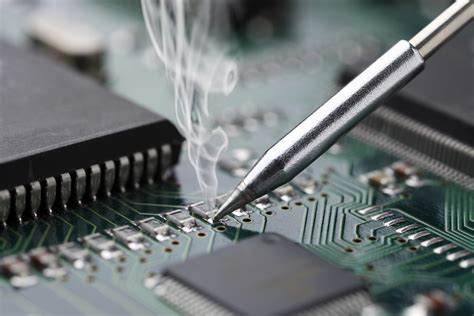
Best Practices for Optimizing Your PCB Projects
When working on printed circuit board (PCB) projects, adhering to best practices can greatly influence the success and impact of your design and manufacturing process. One key practice is ensuring a well-structured design phase. Utilize design software that enables effective simulation of your pcb assembly before full production begins. This allows for the identification of potential issues early, reducing costly errors during the pcba manufacturing phase.
Additionally, maintaining clear communication with all stakeholders is crucial. Regular updates and collaborative discussions can help in aligning expectations and swiftly addressing any challenges that arise. Implementing standardized documentation for your pcb assembly processes will also facilitate smoother operations, as it ensures everyone involved is on the same page regarding components, layouts, and assembly protocols.
Moreover, adopting modular designs can enhance flexibility in your projects. By creating PCBs that can accommodate interchangeable components, you enable quicker adaptations to changes in technology or design specifications without the need for a complete overhaul.
Lastly, investing in quality control measures throughout the pcba process cannot be emphasized enough. Regular inspections and testing can prevent defective products from reaching the market, ultimately preserving your brand’s reputation and minimizing waste associated with recalls or repairs. By incorporating these practices into your workflow, you’ll not only optimize your PCB projects but also enhance overall productivity and cost efficiency in electronic manufacturing.
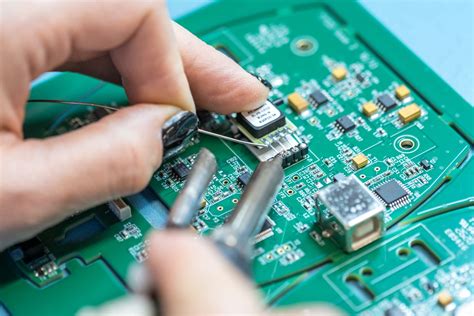
Cost Reduction Strategies Through Efficient PCB Assembly
Effective pcb assembly plays a crucial role in reducing production costs while maintaining quality standards. Adopting a systematic approach to pcba can allow manufacturers to minimize material waste and optimize labor resources. One significant strategy is leveraging automation in the assembly process, which not only enhances precision but also accelerates production timelines, thus driving down costs. Additionally, utilizing advanced manufacturing techniques, such as surface mount technology (SMT), can lead to efficient component placement and reduced assembly times. Selecting quality components up front further contributes to cost reduction by decreasing the likelihood of failures and the associated costs of rework. Establishing long-term relationships with suppliers can also enhance negotiations on pricing and terms, benefiting both parties when it comes to procuring parts for pcb assembly. Moreover, continuous monitoring and analysis of the assembly line can help identify bottlenecks or inefficiencies, allowing businesses to implement timely improvements that bolster productivity and ultimately save costs. By focusing on these strategies within pcba, companies can enhance their competitiveness while ensuring high-quality results in their electronic manufacturing projects.

Enhancing Project Efficiency with Professional Services
Employing pcb assembly services can significantly enhance project efficiency across various industries. By leveraging the expertise of professional pcba providers, organizations can streamline their production processes, resulting in quicker turnaround times and reduced lead times. Professional services not only ensure high-quality outcomes but also improve the consistency of pcb assembly results. This consistency is vital for maintaining the integrity of complex electronic devices that depend heavily on reliable connections and effective communication among components.
Furthermore, partnering with skilled professionals in pcba allows businesses to tap into innovative technologies and advanced manufacturing techniques that they may not have in-house. This access to cutting-edge tools and processes means that organizations can achieve greater precision in their designs while minimizing errors that often lead to costly reworks. Companies that prioritize efficiency tend to focus on integrated workflows, where each aspect of production is optimized for performance.
In this way, the collaborative relationship between clients and pcb assembly experts can manifest as a powerful alliance that drives productivity and quality enhancements. Consequently, by choosing experienced pcba providers, businesses not only strengthen their operational dynamics but also put themselves in a favorable position for meeting evolving market demands while preserving overall project efficacy.
Choosing the Right Partner for Your Printed Circuit Assembly Needs
Selecting the ideal partner for your pcb assembly requirements is a crucial step that can significantly impact the success of your electronic projects. It is essential to look for a provider that specializes in printed circuit assembly services and has a proven track record in delivering high-quality pcba solutions. Key factors to consider include the company’s experience, technical capabilities, and the quality control standards they implement. A reliable partner should offer flexibility in their offerings, allowing you to customize services according to your specific project needs. Consider their ability to handle various complexities of design and production, as well as their commitment to timely delivery, which is vital for maintaining project schedules. Furthermore, engaging with partners who have strong communication practices will enhance collaboration throughout the assembly process. Their willingness to provide support and insight not only aids in troubleshooting issues but also fosters innovation in your designs, ultimately enhancing overall efficiency and driving down costs. By choosing a partner that aligns closely with your project goals and values professional craftsmanship, you position yourself for success in navigating the intricate landscape of pcb assembly manufacturing.
Future Trends in Printed Circuit Assembly Services
The landscape of pcb assembly and pcba is undergoing significant transformation due to advances in technology and shifting market demands. One notable trend is the increasing adoption of automation and artificial intelligence in the pcb assembly process, which enhances precision and reduces human error. As manufacturers seek to streamline operations, the integration of smart technologies allows for real-time monitoring and adjustments, significantly improving production efficiency. Moreover, the rise of miniaturization in electronic components demands innovative approaches from printed circuit assembly services to maintain performance while fitting into smaller spaces. The sustainability movement is also influencing pcba, driving companies to adopt eco-friendly materials and practices throughout the assembly process. As competition intensifies, providers are increasingly focused on flexible supply chains that enable quicker turnarounds, ultimately benefiting their clients’ timelines. Keeping an eye on these trends is essential for businesses aiming to leverage printed circuit assembly services effectively and stay ahead in a rapidly evolving industry.
Conclusion
In the realm of electronic manufacturing, the importance of pcb assembly services cannot be overstated. As businesses strive for efficiency and cost-effectiveness, leveraging pcba services offers a strategic advantage. These services encompass a broad spectrum, from design to assembly, ensuring that all components are meticulously integrated. By understanding the specific needs of a project, teams can substantially enhance their production timelines while simultaneously reducing errors and minimizing waste. Moreover, employing printed circuit assembly principles encourages collaboration between design engineers and assembly professionals, paving the way for innovative solutions that meet emerging industry demands. As companies continue to adapt to market fluctuations, selecting the right pcba partner becomes vital in maintaining competitiveness and facilitating seamless project execution. Ultimately, embracing these services signifies a commitment to excellence in electronic manufacturing that can drive substantial growth in any organization.
FAQs
What are printed circuit assembly services?
Printed circuit assembly services, commonly referred to as PCBA, involve the intricate process of building electronic assemblies by attaching components to a printed circuit board (PCB). These services are crucial for transforming raw boards into functioning devices.
What benefits do printed circuit assembly services offer?
Utilizing pcb assembly services enhances efficiency in production, reduces overall costs, and ensures high-quality standards. These benefits stem from the expertise and advanced technology provided by professionals in the field.
What is the typical process involved in PCB assembly?
The typical pcba process includes several key steps: design review, component placement, soldering (both through-hole and surface mount), inspection, and testing. Each step is essential for ensuring that the final product meets functionality and quality requirements.
How can I optimize my PCB projects using printed circuit assembly services?
To optimize your projects, consider best practices such as thorough design verification, selecting suitable components, and collaborating closely with your pcb assembly service provider. This collaboration can lead to better project outcomes and reduced time-to-market.
Are there specific cost reduction strategies when using PCB assembly services?
Yes, effective strategies include bulk purchasing of components to lower costs, utilizing innovative design techniques that minimize material use, and leveraging professional pcba resources that streamline the manufacturing process.






